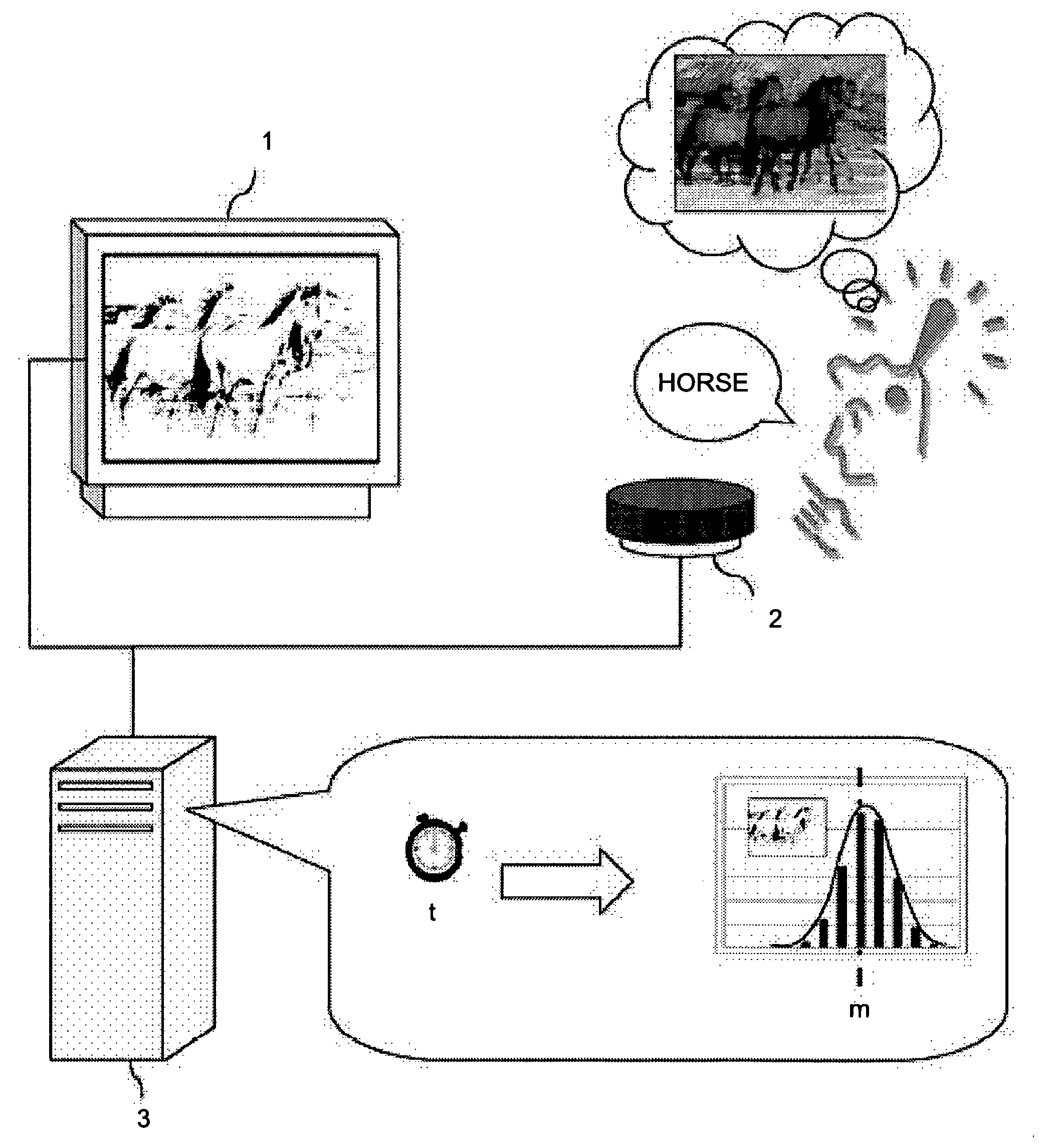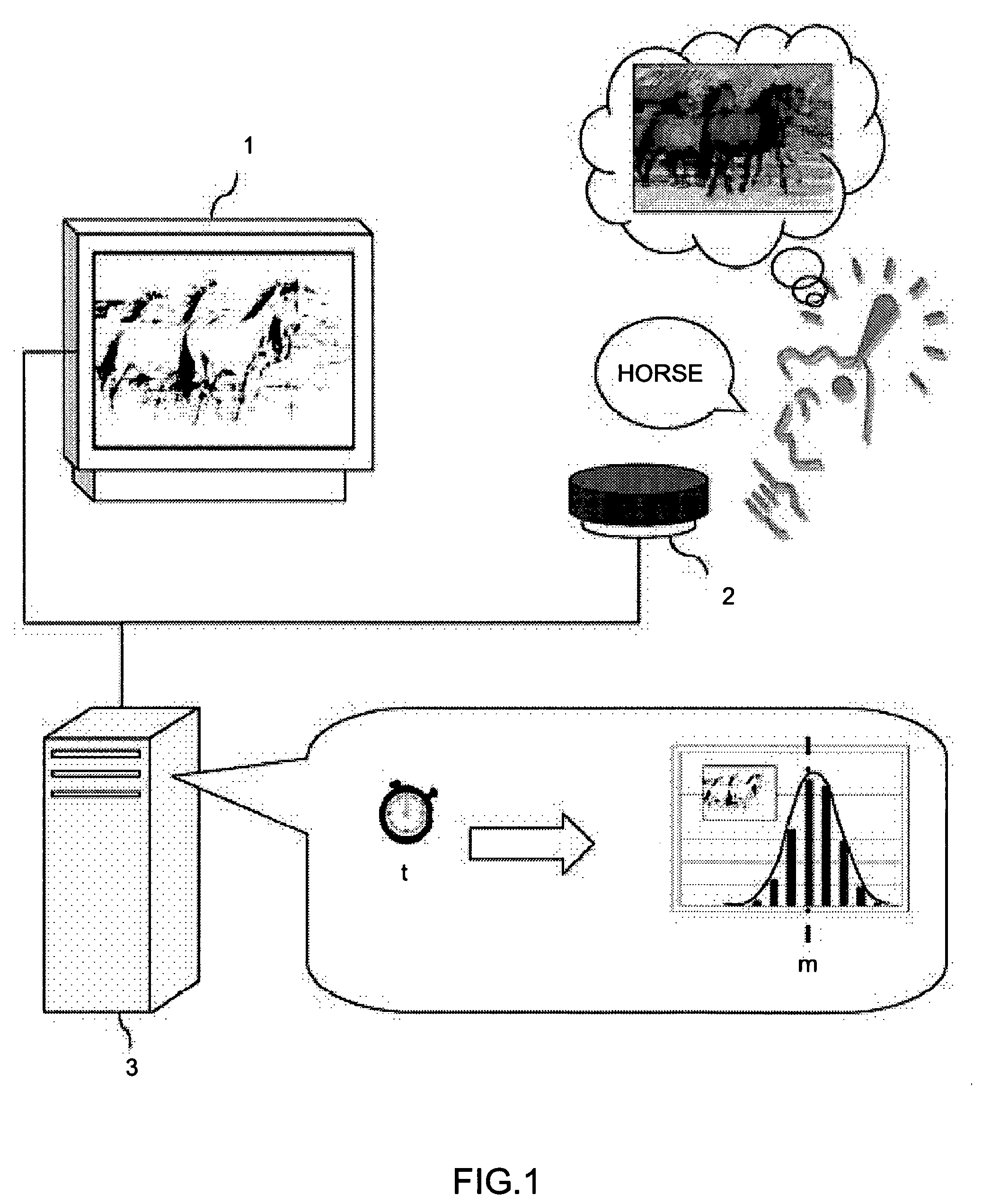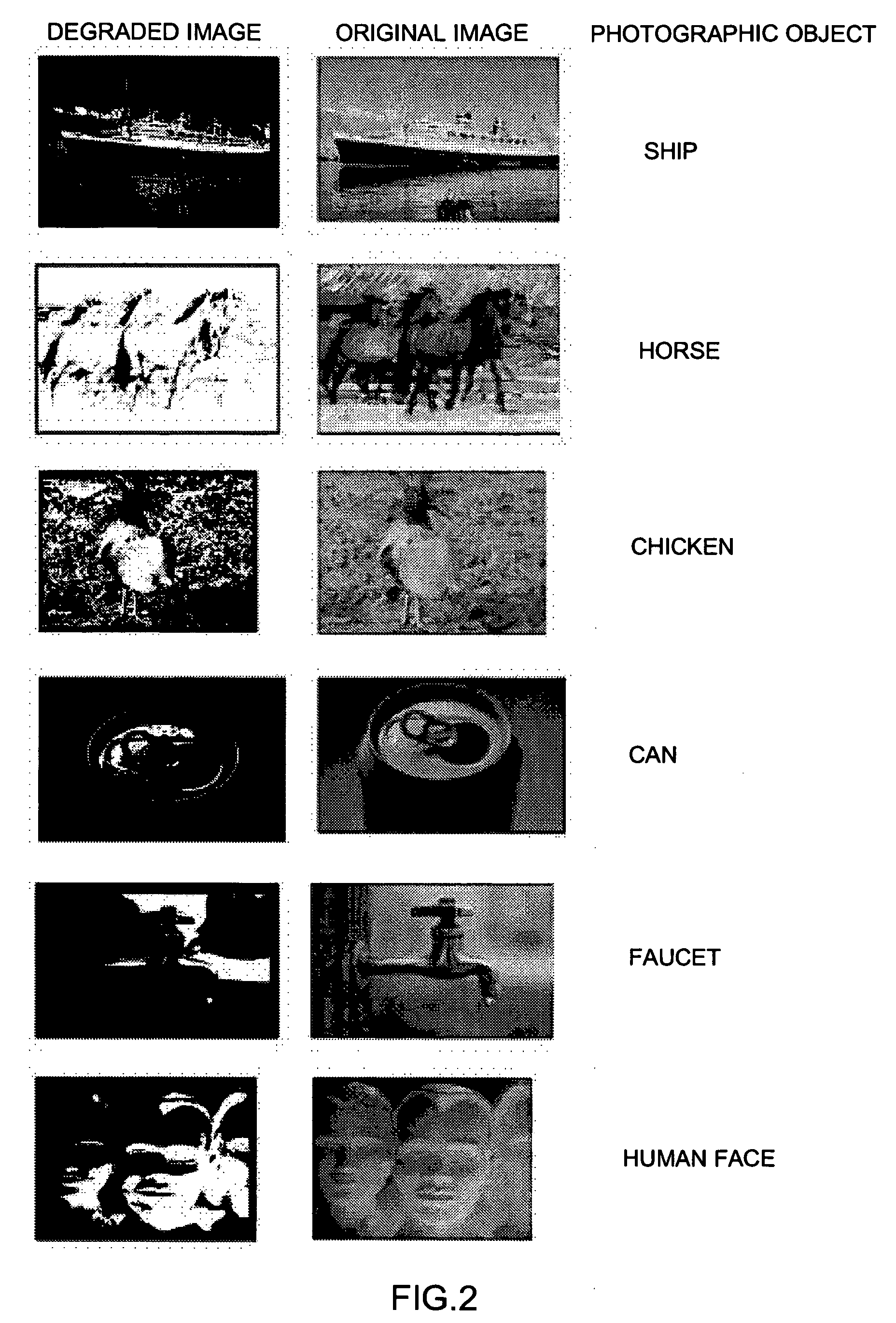Cognitive capacity measurement device and cognitive capacity measurement method
- Summary
- Abstract
- Description
- Claims
- Application Information
AI Technical Summary
Benefits of technology
Problems solved by technology
Method used
Image
Examples
embodiment 1
[0039] The present embodiment was made in order to calculate the unique challenge level parameter of an image from the frequency distribution of multiple subjects in relation to the logarithm of the recognition times of the photographic object of the degraded image. FIG. 1 is a schematic configuration diagram indicating the challenge level measurement device of the present embodiment. This challenge level measurement device comprises: an image display unit 1 that displays to a subject for a specified time an original image having a significant photographic object and a degraded image that is an image in which specified processing has been conducted on the aforementioned original image and the data for recognizing the aforementioned photographic object has been degraded; a receiving unit 2 to receive from the subject the fact that the aforementioned photographic object has been recognized; and a data processing device 3 that receives the reception signals from this receiving unit 2 a...
embodiment 2
[0062] The present embodiment is configured so that the cognitive capacity of the subject is measured using challenge level data calculated by Embodiment 1. FIG. 10 is a schematic configuration diagram indicating the cognitive capacity measurement device of the present embodiment. In the same way as in Embodiment 1, this cognitive capacity measurement device comprises: an image display unit 1 that displays to a subject for a specified time an original image having a significant photographic object and a degraded image that is an image in which specified processing has been conducted on the aforementioned original image and the data for recognizing the aforementioned photographic object has been degraded; a receiving unit 2 to receive from the subject the fact that the aforementioned photographic object has been recognized; and a data processing device 3 that receives the reception signals from this receiving unit 2 and conducts specified data processing based thereon.
[0063] Here, t...
experiment 1
Calculation of the Challenge Level Parameter
[0079] The recognition times of 91 subjects (20 to 24 years) were measured using 90 groups of images, and the challenge level parameters of the images were calculated. FIG. 14 indicates the cumulative frequency distribution of the subjects in relation to the logarithm of the recognition times.
[0080]FIG. 15 indicates one part of the challenge level parameters of the images calculated in the experiment.
[0081] In addition, from the results of the experiment the approximation equation of Formula 6 below was obtained as an approximation equation that is established between the standard deviation a and the challenge level parameter m.
σ=0.315 m+0.443 formula 6
PUM
 Login to View More
Login to View More Abstract
Description
Claims
Application Information
 Login to View More
Login to View More - R&D
- Intellectual Property
- Life Sciences
- Materials
- Tech Scout
- Unparalleled Data Quality
- Higher Quality Content
- 60% Fewer Hallucinations
Browse by: Latest US Patents, China's latest patents, Technical Efficacy Thesaurus, Application Domain, Technology Topic, Popular Technical Reports.
© 2025 PatSnap. All rights reserved.Legal|Privacy policy|Modern Slavery Act Transparency Statement|Sitemap|About US| Contact US: help@patsnap.com



